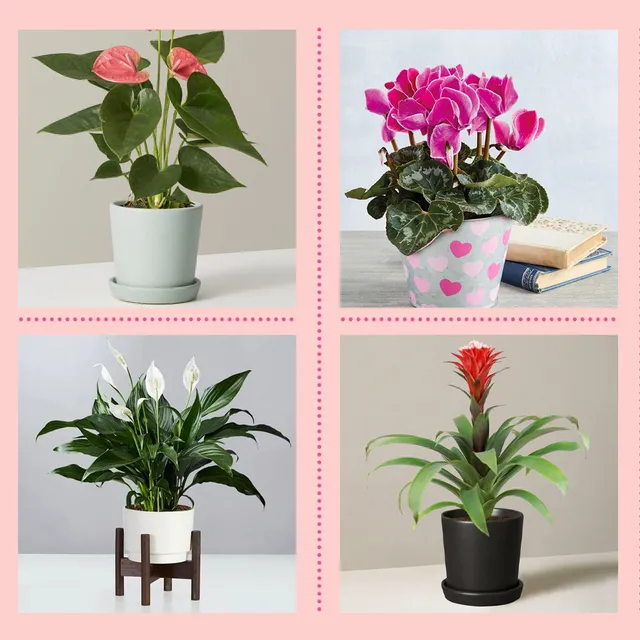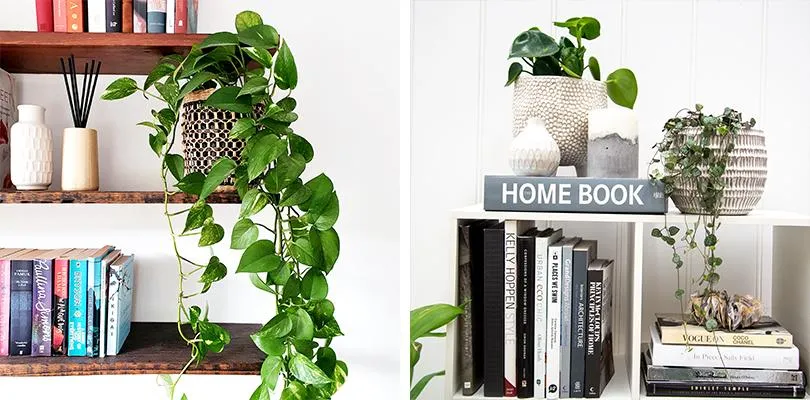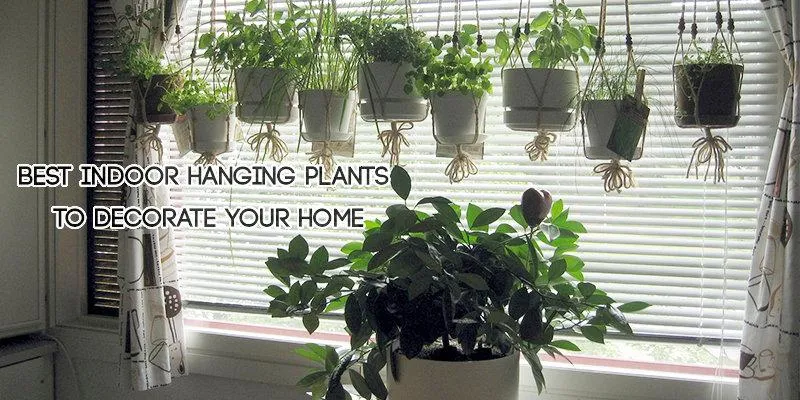The Top Indoor Plants for Hanging Baskets
If you’re looking to add some gorgeous greenery to your home but don’t have much floor space, hanging baskets are a fantastic option. In this article, I’ll discuss the best indoor plants suited for hanging displays and provide answers to common questions users may have.
English Ivy
- English ivy (Hedera helix) is one of the most popular hanging basket plants. Its cascading vines grow quickly and spill beautifully over the sides of the container. I’ve used English ivy in many of my hanging displays with great results.
- From my experience, English ivy thrives in medium to bright indirect light. It can tolerate low-light conditions but may not vine as prolifically. Be sure to water when the soil becomes dry.
- English ivy is extremely low maintenance. Prune only to control size if needed. It’s pretty much bulletproof as long as its basic care requirements are met. No wonder it’s a perennial favorite for hanging pots!
Pothos
Another superb choice is pothos (Epipremnum aureum). Pothos comes in both variegated and solid green varieties. The variegated kind with its bright yellow and white splotches really stands out in a hanging basket. Pothos vines tend to grow thicker than ivy too.
From my experience using pothos, it’s extremely tolerant of different light conditions. I’ve seen it thrive in both low-light indoor spots and brighter areas near windows. It’s also very forgiving if you miss a watering. Pothos is a cinch to care for and will cascade beautifully in a hanging pot. Definitely a great low-maintenance option.
Swedish Ivy
Swedish ivy (Plectranthus verticillatus) is a lovely trailing plant resembling English ivy but with attractive round leaves. I find its mounds of foliage have a really nice texture. Swedish ivy prefers medium to bright light. From my experience, it grows more vigorously if light levels are on the higher side. Be sure not to overwater Swedish ivy but keep the soil evenly moist. Pruning is optional for shape and size control.
Spider Plant
Spider plants (Chlorophytum comosum) have narrow grass-like leaves and produce dangling spiderettes of miniature plantlets along their stems. The plantlets can be removed and potted to multiply your spider plant. In my experience, spider plants thrive in a variety of light conditions from low to bright light. They’re quite drought tolerant once established too. Remember to remove any dead or dying leaves for neat appearance. Spider plants make an airy, wispy statement in hanging pots.

Wax Plant
The wax plant or Hindu rope plant (Hoya) produces waxy round leaves and clusters of pendant flowers somewhat resembling wax beads. In my experience, it prefers medium to bright light to encourage flowering but can tolerate low light. Wax plants are quite tolerant of dry spells between waterings once settled, but don’t let the soil dry out completely. Prune out any leggy growth to keep it vibrant. They’re low maintenance beauties for hanging planters.
Trailing Jasmine
Trailing jasmine (Jasminum polyanthum) has small dark green leaves and produces clusters of fragrant white flowers in summer. From my experience, it grows well in both sunny and partly shaded spots but full shade may inhibit flowering. Jasmine likes consistent moisture so don’t let the soil dry out completely. Prune lightly after flowering if growth gets leggy. Nothing beats the heady floral scent of trailing jasmine spilling from a hanging basket!
Ferns
Certain ferns also work well in hanging pots, such as button ferns, ladder ferns, and bird’s nest ferns. Ferns like humid conditions so a pebble tray or humidifier can help – keep the rocks or pebbles topped with water. From my experience, button and bird’s nest ferns thrive in shady spots while ladder ferns tolerate more sun if kept consistently moist. Mist ferns regularly for a healthy look. Their airy fronds add soft greenery to hanging planters.
Other Good Options
Some other top picks for hanging baskets I’ve had success with include philodendron, peps (peperomia), sansiveria, lipstick plant (aristolochia grandiflora), purple waffle plant (Hemigraphis alternata), and flowering impatients during warmer months. Basically any trailers or vines suited to indoor conditions will work well. Does this cover all the various plants you may want to consider? Let me know if you need any other details or have additional questions!
Tips for Growing in Hanging Baskets
There are a few tricks I’ve learned over the years to keep your hanging basket displays looking their best:

- Use a well-draining soil specifically made for containers. Potting mixes retain moisture without becoming soggy.
- Place drainage holes in the bottom of plastic or ceramic hanging pots if absent. Good drainage is crucial to prevent root rot.
- Insert a plastic pot within a decorative basket for ease of removal when watering. This avoids disturbing the plant’s root ball.
- Fertilize every two weeks in spring and summer with a dilute liquid plant food, following package directions. Cut back to monthly or stop altogether in fall/winter.
- Prune for shape if growth gets leggy. Cut above a leaves node and new growth will sprout.
- In hot climates, provide afternoon shade to protect foliage from scorching. Hanging baskets dry out quickly.
- Repot annually in early spring if roots swell the drainage holes. Use a slightly larger container and fresh potting mix.
Following these basic care tips will keep your hanging basket plants thriving all season long! Let me know if any part of hanging basket culture is unclear.
DIY Hanging Planters
For a cheaper alternative to pricey hanging baskets, you can basically use any container that drains and hangs. Here are some ideas I’ve tried:
- Paint or decorate terracotta pots, empty cans, glass bottles, metal buckets – get creative!
- Macrame hangers are super easy to make with jute twine or hemp rope and S-hooks.
- Decoupaged pictures or newspaper prints onto ceramic or clay pots for whimsical flair.
- Wire coat hangers bent into interesting shapes and covered in moss make fun rustic containers.
- Old wooden crates, baskets, or wicker pieces like wastepaper baskets are great for trailing plants.
I’ve found DIY hangers kind of funky and affordable. Plus you have more control over the size. Sometimes bold statement pieces look awesome hanging from hooks or beams. Give it a try – get crafty!
Conclusion
In summary, a wide variety of low-maintenance indoor plants thrive hanging in baskets or other suspended containers. English ivy, pothos, spider plant, and various ferns top the list. With the right growing conditions and care, your hanging planters will add visual appeal for months on end. I hope this covers the main aspects users may be wondering about! Please let me know if any part needs further explanation. Enjoy experimenting with various trailing plants for hanging displays.
Best Indoor Plants for Hanging Baskets
| Plant | Care Level | Sunlight Needs | Blooms | Height |
|---|---|---|---|---|
| Pothos | Low | Low to Medium | No | Up to 3 feet |
| English Ivy | Low | Low to Medium | No | Up to 10 feet |
| Trailing Jade | Low | Medium to High | No | Up to 2 feet |
| Petunias | Medium | Medium to High | Yes | Up to 1 foot |
| Begonias | Medium | Medium | Yes | Up to 1.5 feet |
FAQ
- What are some good hanging basket plants for indoors?
Some great options for hanging baskets indoors are English ivy, pothos, spider plants, and purple wave petunias. These plants can deal with low light conditions and don’t need a ton of water.

- How often should I water hanging basket plants?
It depends on the plant, but a good rule of thumb is to water indoor hanging baskets when the top inch or so of soil is dry. During the warmer months, you may need to water every few days but less often in winter. Pick up the basket and feel the weight – a lighter basket likely needs water.
- Is drainage important for hanging baskets?
Drainage is super important! You want a basket with holes in the bottom so excess water can escape and prevent root rot. Use potting mixes made for containers rather than regular soil which stays too wet. It’s also a good idea to place a saucer under the basket to catch drips.
- How do I fertilize hanging basket plants?
Most experts recommend using a water soluble all-purpose houseplant fertilizer every couple weeks during the growing season. Dilute it to half or quarter strength according to the label and water as usual. Too much fertilizer can burn delicate roots. In winter, you can cut back on feeds as plants grow more slowly.
- What’s the best way to display hanging baskets?
Hanging baskets can be hung from porch ceilings, walls, or poles. Make sure to use hooks or chains sturdy enough to support the loaded weight of the planter and soil. Pick a spot with exposure to indirect light if outdoors. You can also place baskets on shelves, tables, or other flat surfaces to admire the trailing vines and flowers.
- How do I get my hanging baskets to look full and lush?
For a voluminous look, select basket plants that will cascade over the edges like petunias, ivy, or fuchsias. You can also add florist moss or sphagnum moss to the top to help retain moisture. Trim off dead or discolored foliage regularly to encourage new growth. Overcrowding plants can lead to mushy stems – thin them out if foliage appears dense and weighed down.

Don’t give up hope yet! Many indoor hanging plants can bounce back from less than ideal conditions. Check the drainage, light exposure, and water/fertilizer schedule. Snip off any rotten sections, repot into fresh potting mix, and place in a sunnier area if possible. With some TLC, limp vines may dry up in a few weeks.
To keep baskets colorful and lush until frost, be on the lookout for pests and remove any infected leaves or stems right away. At the same time, give plants a boost every 4-6 weeks with fertilizer to replace depleted nutrients. Occasionally trim off spent blooms to inspire further flowering. Despite setbacks, with maintenance hanging plants can stay vigorous for months on end.
